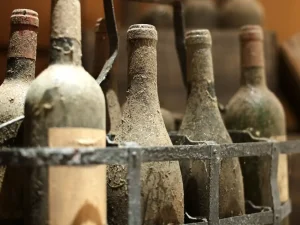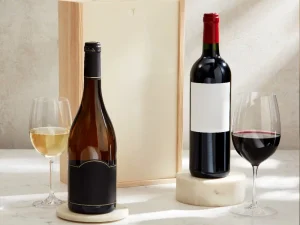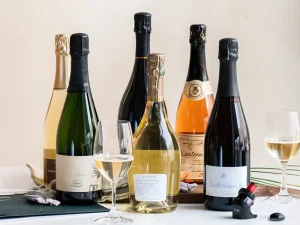Wine is one of the most widely consumed alcoholic beverages worldwide. Many countries generate substantial revenue by producing and shipping wine worldwide. You’ll see many wines in various bottle shapes. Some bottles are tall and narrower, while others are wider but smaller. Different wine bottle shapes have a variety of properties and benefits.
Some bottles are designed to support the aging process. However, many other bottle shapes are merely for aesthetic appeal. Upon entering the shop, you’ll find a variety of wine bottles in different shapes on the shelves. In this article, we will examine the various bottle shapes, their history, and their cultural significance. So, let’s get started!
History of Wine Bottles

Wine has been produced for many centuries. It is obtained from the juice of grapes when it undergoes fermentation. In the early days, there were no wine bottles to pack wines. Therefore, people had to use clay jars, which kept the wine in good condition for an extended period. Those clay jars are called amphorae and were popular till the 16th century.
These amphorae were used by the elite class in the early days. Some regions used to store wine in animal skins and even wooden barrels. In the 16th century, the first wine glass was made in England. This glass is made through coal-fired glass furnaces. Sir Kenelm Digby completed the formation of this glass in the 1630s.
At that time, the world was introduced to the glass bottle for the first time. Wood pieces or clothes were used as a cap of the bottle. In the late 1600s, cork was invented and used as a cap for glass bottles. It became popular due to its air-tightness. It prevented air from entering the bottles and kept the wine in good condition.
Remember, the first wine bottles produced in England were green, fat, and thicker in appearance. Later, glass bottle manufacturing started in different parts of the world. Soon, bottle manufacturing became popular. People shifted from clays to glass bottles.
Different countries and regions started producing bottles of unique shapes for their identity. For example, bottles made in France were typically of the Bordeaux and Burgundy shapes. Various shapes of bottles were helpful as they kept different types of wine. In the 20th century, advanced machines were available for making bottles.
Different Wine Bottle Shapes & Their Meaning
As I said earlier, wine bottles of various shapes are available. A few of them are very popular and well-known worldwide. Remember, there are no rules or restrictions on the shape of a bottle. This enables manufacturers to create distinctive shapes that capture customers’ attention.
In the section below, I’ll explore some popular wine bottle shapes and their meaning.
1- Burgundy Bottle

Burgundy wine bottles are very popular worldwide. They generally carry red or white wines and are distinguished by their slender design. These glass bottles are made in the region of France known as Burgundy. In this region, a diverse range of high-quality wines is produced. Those include Pinot Noir and Chardonnay.
Let’s discuss the primary point, which is the shape of these bottles. The Burgundy is of a decent height, ranging from around 11.5 to 12 inches, depending on the bottle size. However, its shoulder is more sloppy instead of being sharp. Moreover, the neck of these bottles is shorter, which makes pouring more convenient. Despite being tall, these bottles are wider and round.
The color of these Burgundy wine bottles is generally light green. You might also see brown Burgundy, but they are less common. The green color of these bottles protects the bottles from the sunlight and heat. These bottles have a large base, which allows the wine to age slowly and gently. However, due to its broader base, keeping it on the shelves requires more space.
2- Bordeaux Wine Bottle
These wine bottles also find their origin in France. They were first produced in the Bordeaux region of France and are named after this origin. Interestingly, their properties are opposite to those of Burgundy wine bottles. For example, this bottle is taller than the burgundy bottles. Their height is around 12 to 12.5 inches, making it bigger than burgundy bottles.
Bordeaux wine bottles have sharp shoulders, a feature not typically found in Burgundy bottles. Due to its sharp shoulders, it helps in the aging process of wine. How? Because they trap the sediment of the wine and keep it at the bottom. Even when you pour wine from this bottle, sediment remains at the bottom. The long, narrow neck allows for a smooth pouring of wine.
The color of Bordeaux wine bottles is a darker green. They can consist of both red and white wines. Manufacturers typically label these bottles with the type of wine they contain. When it comes to weight, these bottles are thicker and heavier. However, their base is not too big, which is of great advantage. Storage or stacking of these bottles doesn’t require ample space.
3- Alsace/Moselle Bottle
These glass bottles, also known as Flute bottles, are incredibly tall and have an elegant appearance. Their origin belongs to Germany and France. Some people refer to these bottles as Mosel, while others call them Alsace wine bottles. These bottles were first developed in the Mosel region of Germany and the Alsace region of France. Due to this, people confuse their names.
This bottle is taller than both Burgundy and Bordeaux, as its height is 13 inches. However, its thickness and overall diameter are not that high. Due to this combination, these bottles look aesthetically pleasing and prominent from a distance. They generally consist of various white wines that have a sweet taste. Those include Riesling, Gewürztraminer, Pinot Gris, Sylvaner, and Muscat.
In the early days, this bottle shape was typical in France, Germany, and Austria. However, now they are standard worldwide. Their taller shape makes them stand out on the shelves. It has no shoulders and comes with a long neck. No should indicate it is not suitable for aging the wine. The color of these wine bottles can either be light green or brown/amber.
4- Champagne Bottle

The shape of champagne bottles is similar to that of burgundy bottles. They are tall, have a broader base, and have sloping shoulders. Moreover, this bottle is thicker than all other types of wine bottles. It features a special type of wine called champagne, produced in the Champagne region of France. This wine has a high amount of small CO₂ bubbles, which give it a fizzy character.
Remember, these tiny CO₂ bubbles put extra pressure on the walls of these bottles. Therefore, they are made thicker and bulkier to withstand the pressure. They have a deeper punt, which is very useful. This deeper punt increases the strength of these bottles. Moreover, it also evenly distributes the pressure inside the bottle.
The base of these champagne bottles is broader than that of all other wine bottle types. This wider base increases stability, allowing it to stand safely on a flat surface. Moreover, it has a wire cage on the neck of the bottle. It ensures that the caps of the bottles don’t get removed due to internal pressure. The reinforced neck further strengthens the case positioning.
5- Rose Bottle
The shape of the rose bottle varies from region to region. Manufacturers design these bottles to attract customers through their visual appeal. These bottles feature curves that lend them an elegant appearance. Moreover, its flat bottom ensures that it stands securely on the floor. Remember, the rose bottles don’t have fixed shapes.
They can be of any shape, such as bordeaux-style, burgundy-style, and hourglass. Manufacturers play around with their shapes to make them unique and stand out. These bottles are used for different types of Rosé wine. The wine present inside the bottles looks pink. Remember, these bottle shapes do not help in the aging process of Rosé wine.
6- Clavelin Bottle
Clavelin bottles are rare, and it’s likely you’ve never seen one. They are shorter, small, and have squared shoulders. It is only used to carry the special wine known as Vin Jaune. Interestingly, the size of Clavelin bottles is 620 ml instead of the standard 750 ml.
This size indicates the original volume that winemakers receive after the wine has aged. Remember, the Vin Jaune wine undergoes aging for over 6 years. If one liter of wine is placed for aging, after 6 years, winemakers get 620 ml of wine. Due to this, these bottles have a total capacity of 620 ml. The color of Clavelin bottles is generally dark green.
7- Rhone
Burgundy and Rhone bottles are similar in terms of their shape. For example, both bottles have sloped shoulders with wider bodies. However, the Rhone bottles are slightly bigger and taller (up to 12.25 inches). However, their bigger size does not mean that they carry more wine.
The Rhone bottles are more visually appealing due to their embossed crest or emblem. They also have a bit longer neck, which differentiates them from the burgundy bottles. Their name is Rhone, which originates from the Rhône Valley of France. They carry both red (Syrah, Grenache, Mourvèdre) and white wines (Viognier, Marsanne, Roussanne)
Conclusion
As I mentioned earlier, wine is a popular alcoholic beverage used worldwide. Interestingly, wine bottles come in a wide range of unique shapes and styles. This raises the question of whether there is a standard or rule for shaping wine bottles. The answer is NO! There are several common bottle shapes available on the shelves.
However, it does not mean that all manufacturers produce bottles in any of those shapes. Manufacturers aim to make the bottle unique and stylish so that it stands out from the crowd. You’ll see many unique shapes of wine bottles that attract from a distance. In this article, I’ve explained the most popular bottle shapes and their details.
